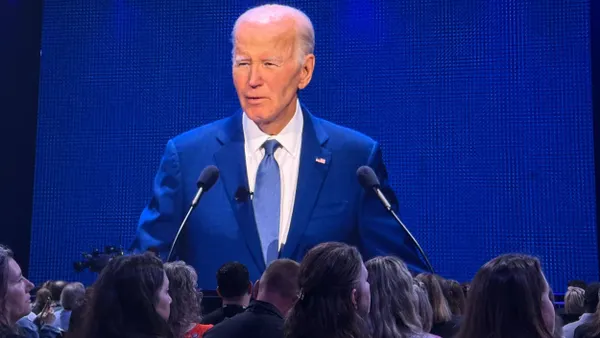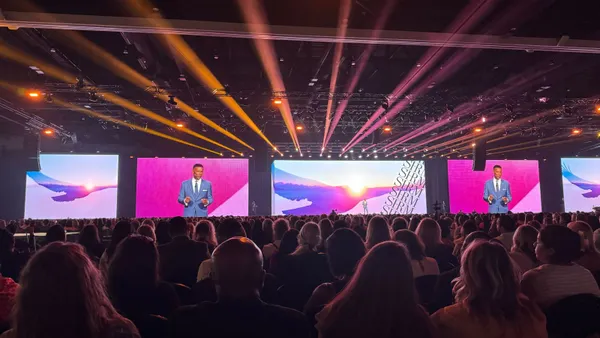LAS VEGAS — After broadcasting a call to action on Monday for HR to "inspire the best in people," Johnny C. Taylor, Jr., CEO of the Society for Human Resource Management (SHRM), spoke Tuesday about SHRM's at-times controversial approach to bringing about that transformation.
"SHRM is into policy, not politics," Taylor said during a press briefing, addressing the association's work with the current administration — something that has been publicly scrutinized by the organization's membership. That engagement, however, is strategic, he said. Policy leaders in government have the cache to get CEOs to show up, and when SHRM is seen alongside policy leaders it can help CHROs look like strategic partners to CEOs, Taylor said. That strategic viewpoint may be key to solving some of the workplace's more egregious issues, he said.
"I don't think you can legislate yourself out of this," Taylor said. Harassment, discrimination and retaliation spring from culture, according to SHRM's new culture initiative. "If people don't know how to identify bad workplace behavior, we're never going to fix this. If there's tolerance for this at the top ... there's a problem."
SHRM's "Better Workplaces, Better World" motto for the conference displays the association's intent to work on that problem. But Taylor was quick to note that the inspirational approach to diversity and inclusion displayed during Monday's keynote — featuring spots devoted to formerly incarcerated workers, people with disabilities and older workers — is tempered by the business-focused approach that HR must take to these issues.
"I don't disagree that it is the right thing to do," he said, "but it is also smart. It's smart for business. We need people." He called the hot economy, a slowed birthrate and a still unsorted worker immigration situation "the perfect storm" — and the perfect reason to focus on untapped talent pools. CEOs, Taylor noted, want their HR departments to keep them out of trouble. But finding talent is a close second priority.
"Two years ago we were talking about avoiding age discrimination lawsuits," Taylor said of the conference. "Now, we are telling HR people how to hire [older workers]." That change represents another seismic shift in the industry; HR leaders have traditionally "not taken an active role" in getting older workers or other diverse groups into their companies, he said. And that includes active diversity hiring, as opposed to direct compliance work.
HR must be ready to anticipate problems their companies face, despite the fact that HR people have typically been expected to do more with less investment. Chief diversity officers, who often work closely with or are involved in HR processes at the company, also lack necessary support and resources from their organizations, a previous study by Russell Reynolds Associates said. SHRM may need to upskill its HR professionals, Taylor noted, to grapple with these changes.
Otherwise, hidden talent may continue to stay hidden.
"Look at the value you are letting walk out the door," Taylor said of the applicants that may get rejected due to bias. To remain a strategic partner in the future of work, HR will need to eliminate barriers to hiring, including those present within current facilities and even office designs. Everything goes back to one question, he said: How can we get people to work?












